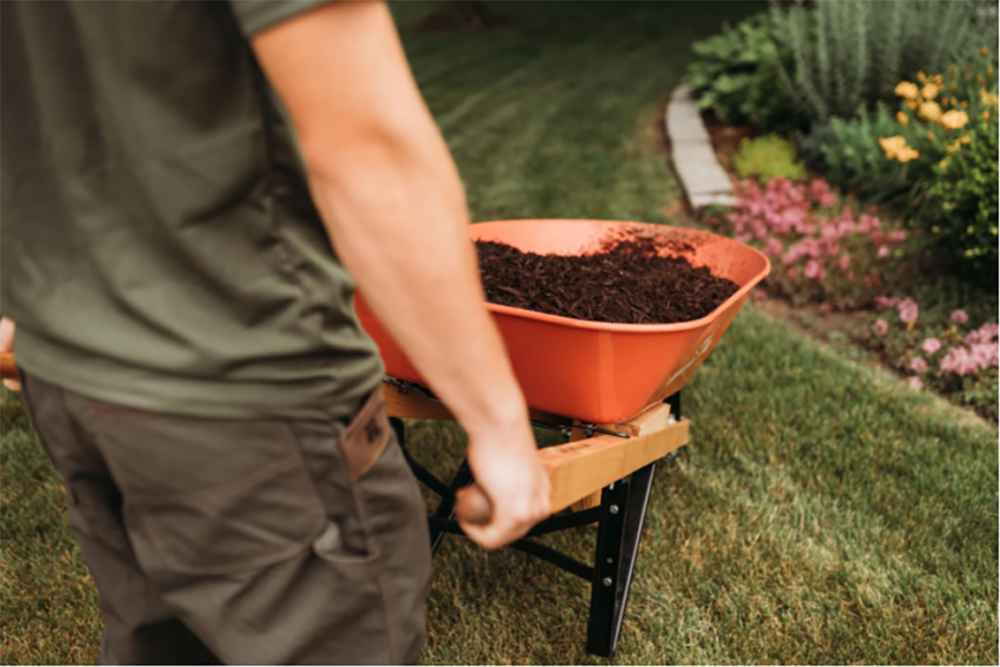 When considering your garden, a routine is one of the best ways to get the best results. Here is our yearly garden maintenance checklist to help you stay on top of everything.
When considering your garden, a routine is one of the best ways to get the best results. Here is our yearly garden maintenance checklist to help you stay on top of everything.
Just like your garden has different seasons of growth, it also has distinct seasons of maintenance. What needs to be done depends on the time of the year and the type of plants in the garden. Proper garden maintenance is important because it helps your garden transition from one season to another.
January
- Get plants and seed catalogues out and start planning next season’s garden.
- Trim tree branches, leaves, and cut grass to use as mulch in the garden.
- Scout tree branches and limbs for signs of egg masses.
February
- Finish pruning roses, shrubs, and trees. After pruning, be sure to clean your tools.
- Prune and cut back perennials and ornamental grasses.
- Keep tabs on your houseplants. Make sure they are getting ample humidity. Check for pests all the time
March
- Start the all-purpose spray routine.
- Feed your garden with organic all-purpose plant fertilizer.
- Cut down disposing of mulch from the areas of rose bushes.
- Continue to prepare beds for spring. Here, consult professional gardeners to make sure you have the best preparation. Turn the soil and add at least 4 inches of compost.
April
- Plant edibles like lettuce, tomatoes, herbs, zucchini, and berries. Sow bean, corn, cucumber. Melon, and winter seeds directly into the ground.
- Remove mulch from top of flowers.
- Apply pre-emergent crabgrass killer after forsythia bloom.
- Transplant tomato seedlings: pinch off all but the top two pairs of leaves and set the seedling into a deep hole. Backfill, keeping the top leaves above the soil.
- Work your cover crops into the soil before they seed.
- Try to do monitoring regularly to keep an eye on plant diseases.
May
- Plan edibles, such as pumpkins, squash, sunflowers, peppers, basil, and melons.
- Prune spring-flowering shrubs after bloom.
- Start with pinching annuals and perennials to make the vegetation fill in and produce extra blooms.
- Release ladybugs and other beneficial insects to help control aphids, mites, whiteflies, and other garden pests.
- Remove and dispose of azalea leaf galls earlier than they flip white and release their spores.
June
Continue punching plants.
Divide and transplant perennials.
Feed tomato plants with a low-nitrogen fertilizer when the fruits start to develop.
Take softwood cuttings from bushes and shrubs to propagate new plants.
July
- Stop pinching back flowers.
- Water mature trees deeply.
- Mulch garden and vegetable beds, reduce watering needs and keep the weeds down.
- Start seeds of fall vegetation like broccoli, cabbage, and cauliflower.
August
- Seed a fall crop of peas.
- Collect herbs and flora for drying.
- Keep deadheading and harvesting.
- Start off taking cuttings for new plants.
September
- Start moving houseplants indoors.
- Seed a fall spinach crop.
- Seed cover crops on bare spots in the vegetable garden.
- Fertilize azaleas, camellias and rhododendrons with fertilizer for acid-loving plants.
- Dry and store soft bulbs earlier than a frost.
October
- Plant garlic and shallots.
- Have your soil tested and amend as needed.
- Clean up garden debris.
- Remove dead annuals from the garden, after a frost.
- Start raking and composting leaves
November
- Finish amending the soil.
- Cover the uncovered backyard soil using a layer of shredded leaves.
- Keep watering until the ground temperature reaches 40 degrees Fahrenheit.
- Mulch rose bushes.
- Wrap screening all-round the fruit tree trunks often damaged via mice and voles.
December
- You can now harvest any ultimate root crops.
- Check your stored tender bulbs for rotor dryness.
- Start paperwhites and amaryllis for winter blooms.
- Start rotating your houseplants, so they get equal light on all sides.
Hopefully, this garden maintenance checklist will help you get the best results from your garden this season. But if you ever need some help, consider enlisting us! If you are in need of a professional gardener this spring, feel free to contact us for a quote.